|
|
Sony Ericsson – plans, strategy, products. Announcement of June, 14
In this article we will try to break down what is happening around Sony Ericsson, which fields are being taken to the forefront and what the future holds for us. With no claims to being an all-around research, this article is just one of the attempts to shed more light on the recent events.
Market position of Sony Ericsson
According to a variety of estimations by research companies, Sony Ericsson takes up about 8 percent share on the global market of mobile terminals in 2007 and keeps growing. Speaking of its actual position, it is placed fourth, at that the gap separating it from Nokia is substantial, while Motorola’s market share has been slowly growing thin due to negative factors and weakness of the portfolio (learn more in Motorola – strategy and vision, product line for 2007). Samsung is also developing in a relatively negative way in view of meager offer of inexpensive solutions for developing markets and scanty attention paid to carrier markets, so it is getting on a down streak.
Let us take a look at the data on globe-wide sales in 2005-2006 to find the tipping point, after which Sony Ericsson’s solutions have been experiencing sales growth.
| Global Sell-In (Millions) |
Q2 '05 |
Q3 '05 |
Q4 '05 |
2005 |
Q1 '06 |
Q2 '06 |
| Nokia |
60.8 |
66.6 |
83.7 |
264.9 |
75.1 |
78.4 |
| Motorola |
33.9 |
38.7 |
44.7 |
146.0 |
46.1 |
51.9 |
| Samsung |
24.4 |
26.8 |
27.2 |
102.9 |
29.0 |
26.3 |
| Sony Ericsson |
11.8 |
13.8 |
16.1 |
51.1 |
13.3 |
15.7 |
| LG |
12.1 |
15.5 |
16.2 |
54.9 |
15.6 |
15.3 |
| Others |
44.2 |
48.8 |
57.6 |
197.2 |
46.6 |
47.7 |
| Total |
187.2 |
210.2 |
245.5 |
817.0 |
225.7 |
235.3 |
| Global Share % |
Q2 '05 |
Q3 '05 |
Q4 '05 |
2005 |
Q1 '06 |
Q2 '06 |
| Nokia |
32.5% |
31.7% |
34.1% |
32.4% |
33.3% |
33.3% |
| Motorola |
18.1% |
18.4% |
18.2% |
17.9% |
20.4% |
22.1% |
| Samsung |
13.0% |
12.8% |
11.1% |
12.6% |
12.8% |
11.2% |
| Sony Ericsson |
6.3% |
6.6% |
6.6% |
6.3% |
5.9% |
6.7% |
| LG |
6.5% |
7.4% |
6.6% |
6.7% |
6.9% |
6.5% |
| Others |
23.6% |
23.2% |
23.5% |
24.1% |
20.6% |
20.3% |
| Total |
100.0% |
100.0% |
100.0% |
100.0% |
100.0% |
100.0% |
| |
|
|
|
|
|
|
| Total Growth YoY |
17.6% |
25.5% |
24.9% |
20.1% |
29.6% |
25.7% |
Source: Strategy Analytics
The second quarter of 2006 saw a significant event – Sony Ericsson moved back to the fourth place on the world market, knocking LG off. This success has much to do with high demand for the Walkman-branded phones. At that moment other makers also started on preparing own music-driven solutions, since no solid music inclined portfolio was offered by Nokia, Motorola, Samsung.
Product families
The concept of a product family gathered under a sub-brand, stand-alone trademark has stood the test of time. The first brand of this kind was Walkman, in 2006 CyberShot followed up. The idea of separate trademarks for every line-up is straightforward and makes for clearer positioning on the market. While keeping the devices feature-rich, the vendor puts one feature into the limelight and focuses on it. The market hadn’t seen this approach before, all makers were trying to run with either stand-alone offerings or whole tailored families (like the collections of Nokia’s fashion phones). Formally, Nokia walks the same way differentiating S40 and S60, but the problem is, these platforms characterize too many devices with very different functionality. And it is really challenging to figure out which of the devices seems fit for every demographics. Choice of a smartphone as a certain device type doesn’t make any difference on the market, that is way division into platforms is more of an artificial move, rather than marketing-driven.

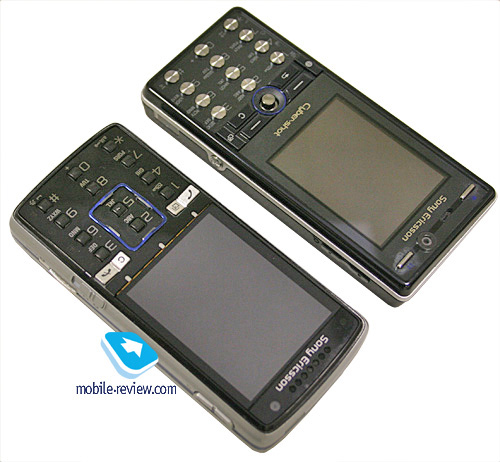
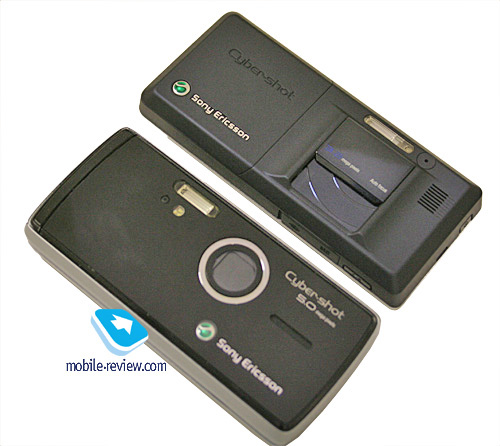

Having offered the market and consumers a simple idea of products’ highlighted function matching the range’s name, Sony Ericsson established a new field in the handset marketing, though it was nothing new on the market, this concept had never been used for mobile phones before. This approach is now being employed by all manufacturers, as they are trying to get products together into a line-up, offering some unique feature (Ultra Edition by Samsung, L’Amour by Nokia), or create a whole family (ROKR by Motorola in future, XPressMusic by Nokia, N-Gage coming up). That’s the way to get solutions into different corners of the ring.
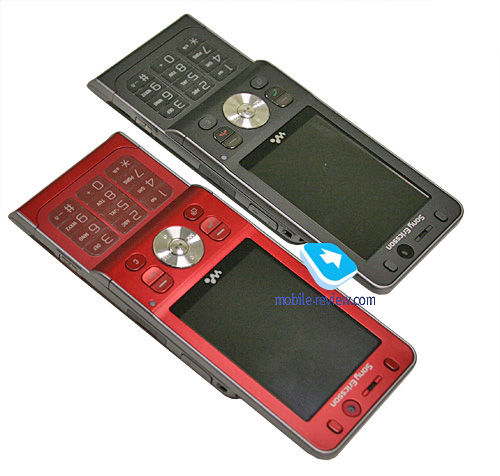
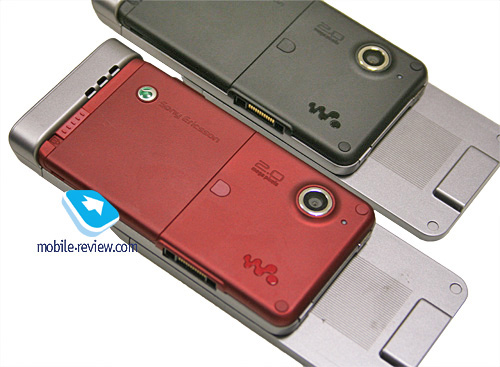
The Sony Ericsson’s cutting edge is having brands with history behind them, for example Walkman has been known since the 70s, and in fact, is the trademark that gave birth to a whole industry, in its turn, CyberShot brand is widely used in the market of digital cameras. All such brands make the products more valuable and trust-worthy in the eyes on consumers, all them to enter step over the line when they get generally accepted. Other manufacturers have to strive to achieve comparable effect. This way, Nokia, in order to pose a competition in the market of imaging-savvy devices, makes use of Carl Zeiss brand, which means that they company is trying to equalize quality of shots and the optics used in the handset, and pays royalties for this. Over at Sony Ericsson they avoid this, for they advertise and promote a family of solutions, and by this trim promotion expenses. These technically saved funds morph into extra margin for products, which then can be invested into promotion, PR, or R&D.
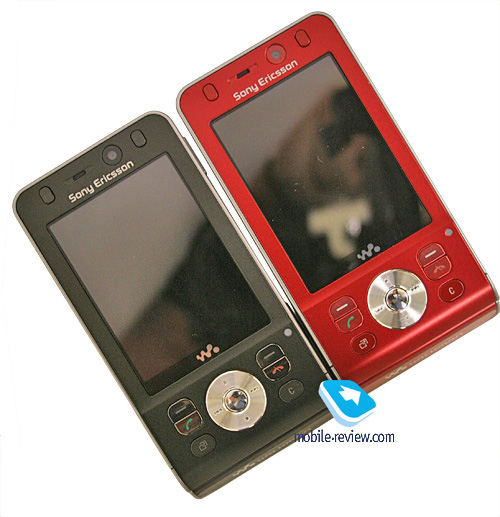
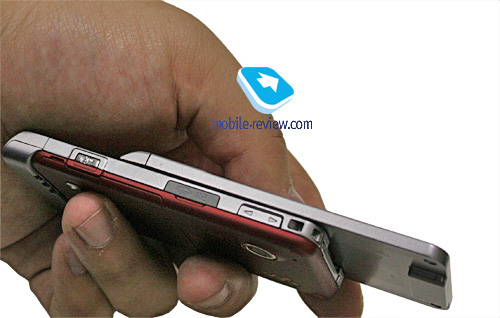
This simple idea of positioning can be put into real money, which is something to reckon with for sure.
Beginning of 2007 – the growth continues
Early in 2007, both Nokia and Sony Ericsson carry on with their share growth due to BenQ Siemens fading away from the market, Motorola having its position weakened and subpar position of LG on many markets in the first place. If we focus on percentage in global sales, then the growth of 2 percent doesn’t represent such a tremendous increase (from 5.9 in 1q06 to 8 percent in 2q07). But if we come to think of this growth as a quarter of the market share, it gets to look much more interesting and significant. But let’s take a look at the sale volumes of handsets:
| |
Q1 2006 |
Q4 2006 |
Q1 2007 |
| Number of units shipped (million) |
13.3 |
26.0 |
21.8 |
| Sales (Euro m.) |
1,992 |
3,782 |
2,925 |
| Gross Margin % |
26.3% |
29.0% |
30.3% |
| Operating Income (Euro m.) |
143 |
484 |
346 |
| Operating Margin % |
7.2% |
12.8% |
11.8% |
| Income Before Taxes (Euro m.) |
151 |
502 |
362 |
| Net income (Euro m.) |
109 |
447 |
254 |
| |
|
|
|
| Average Sales Price (Euro) |
149 |
146 |
134 |
In a year the company nearly doubled the number of units shipped, for a small manufacturer this represents thorough reorganization of both logistics and services and the company structure in general. Such active growth also indicates that in 2006 the company was building up the basement for the forthcoming upgrowth as well (production capacity).
For comparison, here are the reports on Q1 2007 from Nokia – the company shipped 91.1 million devices (a year before it was 72), the year on year growth made 21 percent, at that the price of a Nokia’s handset averaged 89 Euro (almost a half of all sold devices were below the 49 Euro watermark). Average price for a Sony Ericsson handset made up 134 Euro (33 percent higher).
Entry-level – the guarantee of future sales
Basing on the average price for Sony Ericsson-branded handsets, we see that the company isn’t doing very well in the entry-level segment, even though enjoys substantial sales of the models it has over there. By not expanding its presence in the budget market the company leaves itself a niche for further growth on the one side, but looking at this from a different angle shows that it maintains high sale volumes for its mid-range products. Will 2007-2008 see any changes to this field?
It is for sure that the company is not intending to alter its policy in a substantial way, or saturate the market with cheap solution. The main goal they see is keeping the same percentage for sales of entry-level products and boosting sales in the 100 Euro plus segment. This means the company banks not only on price, but rather on the design and advantage of the brand over the competition. Over at the company they do realize that struggling against ultra-lowend by Nokia and Nokia makes absolutely no sense, the margin reaped from them is meager. At the same time, such products have a negative impact on the brand perception, being a sort of burden to deal with when selling more expensive handsets.

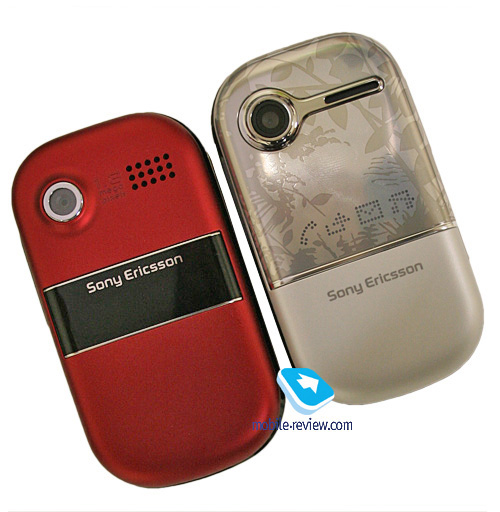
Arima is Sony Ericsson’s traditional partner when it comes to low-end solutions – it is the company that has shipped products under SE brand for years. In 2007 its factory not only has been churning out the J-series, but also the entry-level part of the Z-series and the K-labeled candybars (lower segment). Sony Ericsson has already placed an order for 20 million terminals for 2008 with this maker.
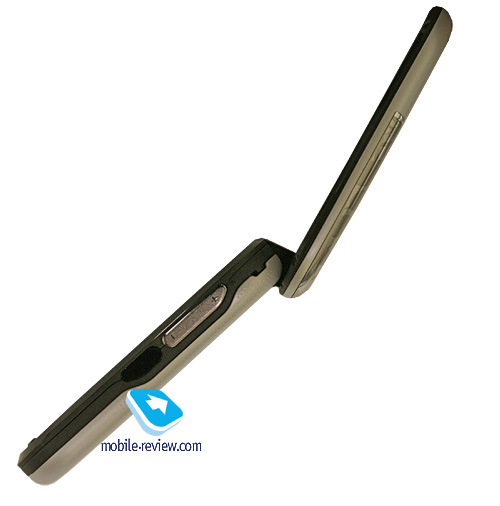
Early in 2007 the company also reached an agreement with Sagem – its products branded as Sony Ericsson solutions with proper software tweaks will become available starting from the end of 2007. Dealing with Sagem is lucrative for Sony Ericsson since the company receives already technically competed products and respective production lines. With software and design coming from its pocket, the vendor gets quality products which he can really sell out, unlike Sagem. Production volume of Sagem handsets for Sony Ericsson in 2008 might make up to 12 million units, which won’t be entry-level solutions for the most part, but rather mid-range offerings (85-160 Euro).
In terms of promotion, the focus will be solely on developing markets like India, whereas in Europe the company isn’t planning on massive deployment of its entry-level offerings. Here they are going to run with the mid-range products full blast.
Designer products – first signs
Sony Ericsson’s portfolio has always featured designer products, i.e. phones with functionality similar to mass-market units, yet sporting quaint design or materials. If we are to draw comparison with Nokia, the company has no offerings that would stand up to the 8xxx-series. Some might say that the design of Sony Ericsson handsets has never been their weak spot (some, on the contrary come out frustrated), but in reality, the company has always been into getting design and functionality together. Having reached a certain level of the sales and built up legacy around own products, the company is taking very cautious steps in its foray into the market of designer solutions.
What really hampers Sony Ericsson here is the fact that the consumers have already come to expect fairly good price/quality ratio, which is far from that “fair” level for designer products and can’t possibly be this way. Selling design and materials, the first thing the company really sells is the idea, leaving functionality on a par with typical solutions. When launching such products, the thing you can’t be wrong with is price – you can’t make it rocket to the stars, however positioning it on the same level with “ordinary” phones isn’t an option either.
Without much doubt, we can consider the Sony Ericsson T650i the company’s first designer product – this phone has metal casing, mineral glass, and differs from the Sony Ericsson K800i probably more in its looks, rather than functionality-wise (with its less potent camera). What is more, on release date, this product will set its prospective owners back only as much as Sony Ericsson K800i, which not typical.
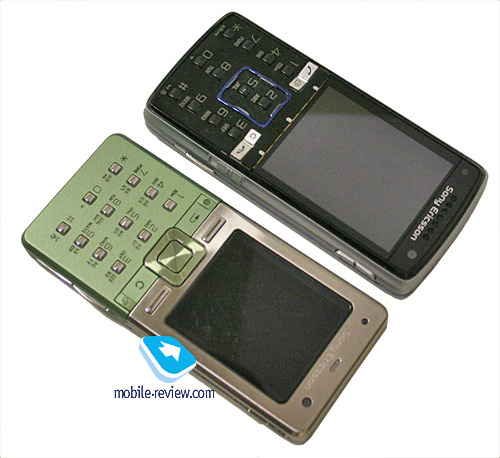
The aim of this device is showing the market that Sony Ericsson actually can roll out such offerings and apart from a host of technological talents it can propose purely design-driven solutions (Nokia has always been good at this, so all the more prudent Sony Ericsson’s steps are).
Will the company keep extending its portfolio with such products? Make no mistake about that. Although, they will be released bit-by-bit and really cautiously – they company puts much thought into every solution of this kind, considers the brand image on the market, size of the audience willing to buy a phone like this and therefore tries to get as little negative feedback as possible. The best time for debut of a product standing in line with Nokia 8xxx is the end of this year, but the company is more likely to take its time until the spring of 2008 to strike for sure. As I see it, the company’s initiative with the range of designer products will pay off and with time it will reinforce its position in this segment.
Portfolio expansion
Sony Ericsson’s strategy is really plain and simple – the company makes up key products and then brings up all possible kinds of editions, varying by design and functionality, so that’s how it gets the portfolio diversified. This approach is characteristic of all makers, but only Nokia and Samsung avail themselves of it best. For Sony Ericsson active expansion of the range has become possible starting from the middle of 2006. In 2007 it has been going on with this trend, which brings about certain load onto the distribution channels. Finalizing the line-up and reaching the desired number of models on the market (around 50 units) will become possible no earlier than Q2 2008 or even a bit later.
The year 2007 will not see active development of the smartphone portfolio – the situation the company in was broken down in the review on Sony Ericsson P1i, so we won’t go over the same thing again.
The key products for 2007 are still Walkman-branded phones and CyberShot solutions. In Q3 2007 we will see another boost of A100 platform’s functionality, let’s look through the change long and decide whether these changes are worthy or not.
Technological innovations in 2007-2008
Formally all new capabilities build upon the same hardware design utilized in the current products. Changing the hardware component will become possible only in 2008, so for now it is all about boosting A100 platform functionality.
Mobile Services Architecture (MSA). Support for Java JSR-248 is an industrial standard, combining a couple of JSR standards and making use of these in the next generation of mobile phones a must for all makers. Also, the standard specifies how libraries with extended capabilities can interact. The major features that the JSR-248 brings to the table are:
- Security & Trust Services API (JSR 177) – electronic transactions, mobile banking, etc;
- Location API (JSR 179) – navigation-based applications, GPS;
- SIP API for Java ME (JSR 180) – VoIP functionality for regular terminals;
- Mobile 3D Graphics API (JSR 184 1.1) – 3D graphics;
- Content Handler API (JSR 211)
- Scalable 2D Vector Graphics API for Java ME (JSR 226)
- Payment API (JSR 229) – mobile commerce;
- Mobile Internationalization API (JSR 238) – localization description.
Additionally to the core JSR in the JSR-248, Sony Ericsson tacks on two own – support for OPEN GL and also support for inbuilt motion sensors. While the current Java platform version is called JP-7, its upgraded edition with all the above JSR is dubbed JP-8.
Built-in motion sensor. We have already seen motion sensors in Sony Ericsson’s products – in the Sony Ericsson W710i it acts as a pedometer, in the Sony Ericsson W580i its functionality has been extended to workout diary and an extra application, in its turn, having none of these apps, the Sony Ericsson K850i automatically adjusts display layout by the handset’s position (auto-orientation). On top of that, all devices running JP-8, the sensor’s data can be accessed by Java-applications, which allows creating games where moving the phone would action on the screen. Marble Madness is a good example of what it may look like.


Another field, where the sensor is welcome, is music playback management – the feature the Sony Ericsson W910i carries onboard. All you have to do is tilt the handset to jump between tracks, and shaking it back and forth activates shuffle.
All these features are no bells and whistles, since other handsets had them before, like in the Samsung E750/E760, Nokia’s solutions, for example the Nokia 5500. The major difference lies in the fact that the developers have finally been permitted to manipulate this function and thus write own applications with it involved. Unlike Nokia, Sony Ericsson offers this ability on feature phones, rather than smartphones, which also adds more value.
3D games, accelerator. At present a three-dimensional picture is put up by the main CPU, since there is no stand-along graphics chip to do this job. But expect it to come along with the release of gaming-oriented mobile phones PSM in the middle of 2008.
Support for microSD. Sony Ericsson is the only on the market that allows for two types of cards on a single device – M2 and microSD – with the Sony Ericsson K850i being first of a kind, where you can insert either card into the slot. This is a reaction to the criticism on M2 cards going for more money than similarly sized microSD (which is not true).
The company has taken this step willingly, as it feels the opportunity to ship bigger cards a tad earlier than their microSD counterparts. The company couldn’t be happier with this scenario – if you need a more capacious memory card, you go for an M2, want to save some coins – you might want to look at microSD type.
GPS-navigation. Mass production of various applications, adaptation of already existing ones to feature phones. In 2007-2008 the company won’t be into bundled GPS-receivers, and will offer than rather as units built in headphones (no additional power source needed). What they rely on is great share of the mid-range products running A100 in Sony Ericsson’s portfolio.
3,5 mm audio jack. A number of products in 2008 will finally acquire 3,5 mm audio jacks on casing. This is also a reaction to a common opinion that this socket is a must for music-heavy phones.
microUSB socket. This slot’s fate hasn’t been decided for sure as yet, but still it has made several appearances on spec sheets of some products. There is a good chance that in 2008 this socket will become par for the course for Sony Ericsson’s solutions, as well as Nokia’s and Motorola’s products.
On-screen touch-sensitive buttons. The technology similar to that employed by the Motorola RAZR2 V8 and the Sony Ericsson K850i. The display gets three touch-sensitive zones, which are context-sensitive and may act differently depending on the menu you are currently in. Initially only prime solutions will come with this onboard, though later on it will go down to the mid-range.
Displays. QVGA resolution for displays is getting to be top-priority, the year 2008 will also see first two devices boasting VGA-screens.
Competition or what’s next?
If you think of the fact that Motorola’s LJ platform will become a significant market player only starting from the fall of 2008, as the company’s portfolio accumulates the required critical mass, Sony Ericsson’s technical solutions will prevail on the market of feature phones. Nokia’s smartphones will be the only direct rivals here, though these products are quite different. Nokia’s S40-powered feature phones are now positioned at the same or lower price, but still their audiences don’t overlap, both makers prefer setting their products apart within various segments.
That said, in 2007-2008 Sony Ericsson will continue to grow rapidly with its market share increasing as well. This is one of the most active players with greatest potential thanks to having no representation in a number of developing segments, premium prices, and the most potent team of designers and developers.
Eldar Murtazin ([email protected])
Translated by Oleg Kononosov([email protected])
Published - 18 June 2007
Have something to add?! Write us... [email protected]
|
News:
[ 31-07 16:21 ]Sir Jony Ive: Apple Isn't In It For The Money
[ 31-07 13:34 ]Video: Nokia Designer Interviews
[ 31-07 13:10 ]RIM To Layoff 3,000 More Employees
[ 30-07 20:59 ]Video: iPhone 5 Housing Shown Off
[ 30-07 19:12 ]Android Fortunes Decline In U.S.
[ 25-07 16:18 ]Why Apple Is Suing Samsung?
[ 25-07 15:53 ]A Few Choice Quotes About Apple ... By Samsung
[ 23-07 20:25 ]Russian iOS Hacker Calls It A Day
[ 23-07 17:40 ]Video: It's Still Not Out, But Galaxy Note 10.1 Gets An Ad
[ 19-07 19:10 ]Another Loss For Nokia: $1 Billion Down In Q2
[ 19-07 17:22 ]British Judge Orders Apple To Run Ads Saying Samsung Did Not Copy Them
[ 19-07 16:57 ]iPhone 5 To Feature Nano-SIM Cards
[ 18-07 14:20 ]What The iPad Could Have Looked Like ...
[ 18-07 13:25 ]App Store Hack Is Still Going Strong Despite Apple's Best Efforts
[ 13-07 12:34 ]Infographic: The (Hypothetical) Sale Of RIM
[ 13-07 11:10 ]Video: iPhone Hacker Makes In-App Purchases Free
[ 12-07 19:50 ]iPhone 5 Images Leak Again
[ 12-07 17:51 ]Android Takes 50%+ Of U.S. And Europe
[ 11-07 16:02 ]Apple Involved In 60% Of Patent Suits
[ 11-07 13:14 ]Video: Kindle Fire Gets A Jelly Bean
Subscribe
|













